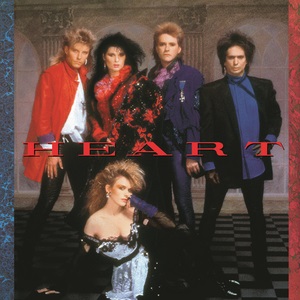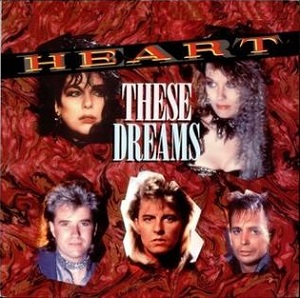As the All Music website helps clarify here, “Trans-Siberian Orchestra is…not a permanent musical organization. Rather, it is the trade name for the session orchestras assembled for a number of symphonic rock cross-over albums produced by Paul O’Neill.” O’Neill was from Queens, New York City, New York, offering a series of rock cross-over albums that we begin looking at today. The Christmas Eve and Other Stories album was released on October 15, 1996.

An Angel Came Down opens with a distinct piano open accompanied at times by thundering guitars and drums that offer alternating movements within the composition later interwoven with bells hinting at the song Silent Night as composed by Franz Xaver Gruber of Hochberg, Austria with lyrics by Joseph Mohr of Salzburg, Austria.
O Come All Ye Faithful/O Holy Night follows the album opener with a more pronounced piano with guitar introduction to two songs eventually fused with drums into a clear harder hitting rock sound than typically heard from either song. This song is presented in strictly instrumental form.

A Star to Follow begins with pronounced adult male singing and supporting instrumentation at first to God Rest Ye Merry Gentleman. The presented composition moves into pre-teen children singing to the expected joy of the Christmas celebration. A third movement returns a chorus of the men singing the words Merry Christmas with the kids singing harmony. An appealing effect follows with an adult choir adding lyrics for the Ukranian folk chant Carol of the Bells. The song ends with the children singing their willingness to follow into the magical joy the holiday promises.
An acoustic guitar introduces First Snow for a few seconds before giving way to a clear electric guitar melody with accompanying drums. Following A Star to Follow, I felt the evocation of satisfied revelry for adults and children. Hinting at a notion of Christmas with snow does not hurt, either. The song plays as a full instrumental without lyrics.
The Silent Nutcracker plays to a more fully throated acoustical instrumental performance. Hints of Silent Night are again made in strictly instrumental form for a more extended playing in what proves to be another song presented without lyrics.
A Mad Russian’s Christmas opens with piano playing in solitude an authoritative electric guitar riffs accompanying. A series of explicit rock melodies follow in instrumental succession, invoking classic orchestral rises and falls of mood to tunes sure to be recognized by most. Of all the songs on Christmas Even and Other Songs, A Mad Russian’s Christmas perhaps best exemplifies why the word orchestra belongs in the Trans-Siberian Orchestra.
With The Prince of Peace, the reintroduction of singing proves welcome and as emotionally uplifting as the reason for the season sung about. An adult female sings of Jesus Christ‘s birth, explicitly invoking Hark! The Herald Angels Sing just beyond minute and a half into the presentation.

Christmas Eve/Sarajevo 12/24 begins with a few seconds worth of traditional instrumentation introducing God Rest Ye Merry Gentleman. A fully instrumental presentation continues from here with a different rocking sound, evoking anticipation, discovery and magic coming with the next day. The birth of Jesus with the celebration indicated with A Star to Follow earlier in the album come to bear again. The band Savatage, who played a significant role in bringing this song to life, were formed in Tampa, Florida in 1983.

Good King Joy raises the octave level on every song that preceded it on Christmas Eve and Other Stories by announcing the birth of Jesus with a bright introductory verse of Joy to the World. Heavy piano and guitar follow in furtherance of the Jesus‘ birth. Switching to a rhythm and blues theme three minutes into a song that plays more than six minutes with lyrics invoking the nativity story with the Magi in Bethlehem works magic.

Ornament brings us back to a raspy blues singer view of a young lady separated from her family leading up to Christmas. We find that the viewpoint is that of a father desperate to have his daughter call a truce to whatever ails the relationship. A specific ornament between the two stands in as the token of hope, memory and joy to bring the two together again on this pending Christmas day.
The First Noel is presented in an acoustic and quick interlude of instrumentation. The song itself reminds of the birth of Jesus and the first nativity in less than a minute of song.

A sympathetic and acoustic, storytelling vibe brings the song Old City Bar. The bluesy father from Ornament continues the story of the disconnected daughter who couldn’t get home on Christmas Eve. The song is a sad tale that turns unexpectedly happy with cab fare to JFK Airport in New York City to get home to her father.
Promises to Keep opens with distinct piano playing that quickly opens to the singing of children in chorus taking upon themselves the seeking and the keeping of the promises of love represented by Christmas. The wishing upon stars give way to keeping the spirit and goodness through the season, the years, the lifetimes. The sweetness is meaning like a music box invoked through the song.
This Christmas Day brings the optimism and feeling of Christmas in stringing together Ornament, Old City Bar and this song with bright strings of lights, ribbons, and the returning home of the daughter to her home, accompanied by the joy of her father. With the promise of desperation giving way to promises delivered now and forever, the feeling resonates through repetitions of the lyrics of “Merry Christmas, merry merry Christmas!”
An Angel Returned frames the album with the opening song of Christmas Eve and Other Stories, An Angel Came Down. In referencing Kyrie (Lord) and at least partially calling upon the “Kyrie, eleison,” or “Lord, have mercy” prayer, this song with new lyrics (An Angel Returned) set to essentially the same music (An Angel Came Down), the Christmas spirit as embodied by faithfulness expressed in song has transformed people through the joy felt in the hope of the savior’s birth on the night of Christmas Eve as told through the songs of this album.

O Holy Night was presented as a bonus song beyond the original album, with an instrumental version of the song that varies from the second half of O Come All Ye Faithful/O Holy Night earlier in the album. This presentation feels like it was played on guitar, though a dobro might have been the primary instrument.
God Rest Ye Merry Gentlemen adds an additional bonus of 75-seconds of an exclusively acoustical presentation of the song.
Matt – Saturday, December 24, 2022








